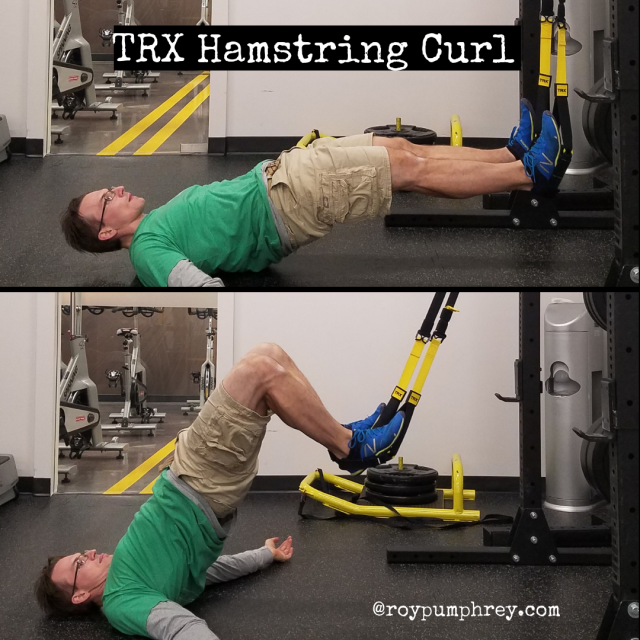
Pop Quiz:
What’s the Function of the Hamstring?
Everyone gets:
Knee Flexion.
Everyone forgets:
Hip Extension
That’s right, the hamstring(s) (3 of the 4) cross 2 joints.
The Semitendinosus, and both heads of the Biceps Femoris (long and short) cross both the knee and the hip.
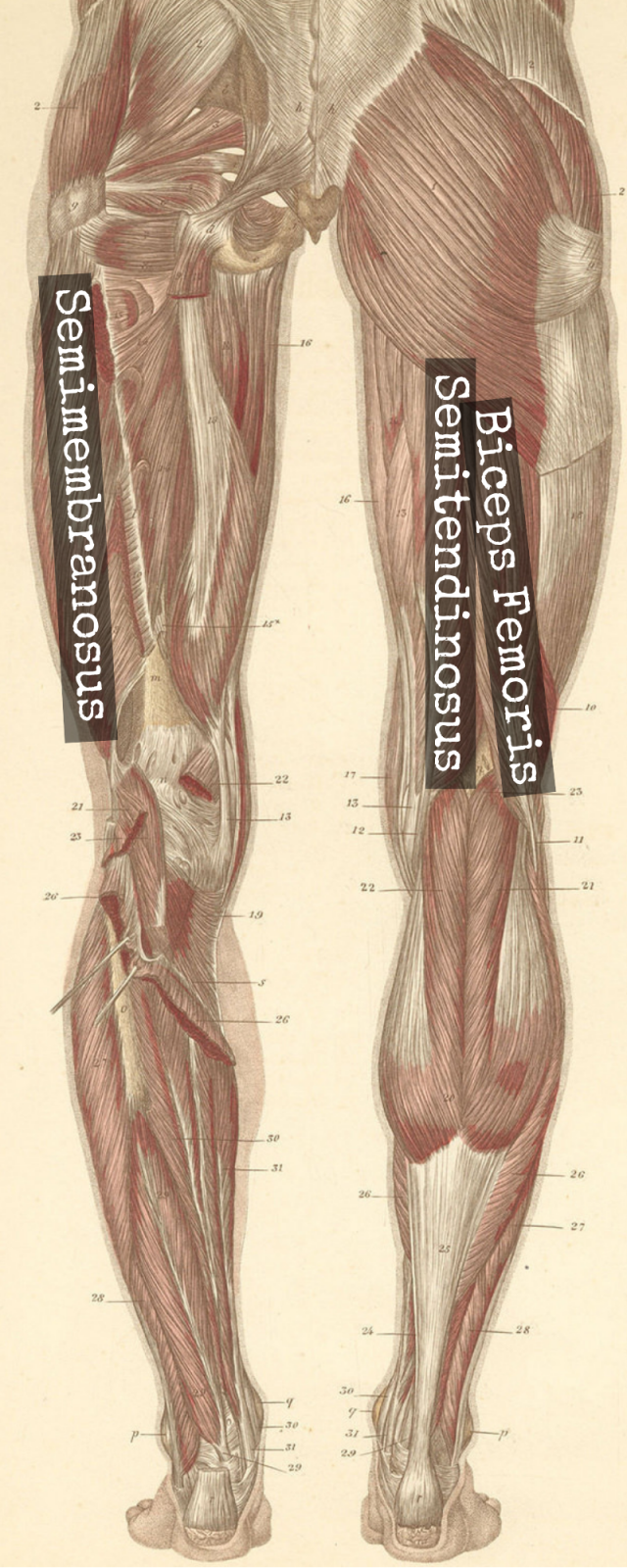
So What the Hell Does That do With What?
This means the hamstrings are not only involved in knee flexion, bending your knee, bringing the heel to the butt, like in a seated hamstring curl.
The hamstrings are also a player (albeit should be secondary to our old friends the glutes) in hip extension.
“The hamstrings have a large moment arm for hip extension, making them a key hip extensor. They also have a large knee flexion moment arm, making them a key knee flexor” – Strength and Conditioning Research
In fact, the hamstrings are such a potentially powerful hip extensor that when sprinting,
“in individuals familiar with sprinting, a greater amount of horizontal GRF (as averaged over an entire sprint acceleration) was found in subjects who were both able to highly activate their hamstring muscles just before ground contact and had the greatest capacity to produce eccentric hamstring torque. In other words, hamstring EMG activity during the swing and end-of-the-swing phases and eccentric knee flexor peak torque are related to the amount of horizontal GRF produced during sprinting, likely because of the backward “pawing” action of the leg just before contact. These findings suggest that, in addition to their paramount importance in sprint-related sports injuries, the hip extensors, and especially the hamstrings, play a significant role in sprint acceleration performance via horizontal GRF production.” –Sprint Acceleration Mechanics: The Major Role of Hamstrings in Horizontal Force Production
And Jumping,
“The optimal distribution of leg muscles for vertical jumping produces a configuration in which muscle volume is gained in the gastrocnemius, vastus, and hamstrings.” –Optimizing the Distribution of Leg Muscles for Vertical Jumping
Wait, But What?
You mean to tell me that the hamstrings need to be trained in BOTH motions, knee flexion and hip extension, for optimal hamstring (and human) function?
YES, for OPTIMAL hamstring function, ie getting the hamstring and glutes to work together to extend the hips and flex the knee, we should work them (at least some of the time) with movements that focus on these motions happening simultaneously.
TRX Hamstring Curl
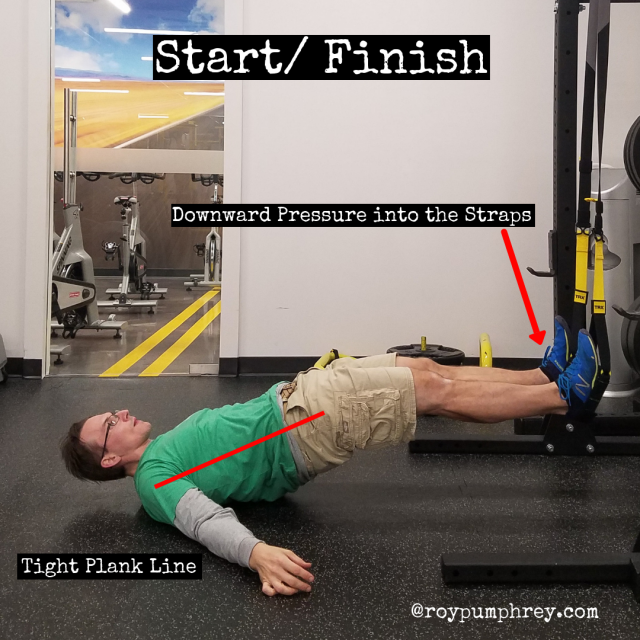
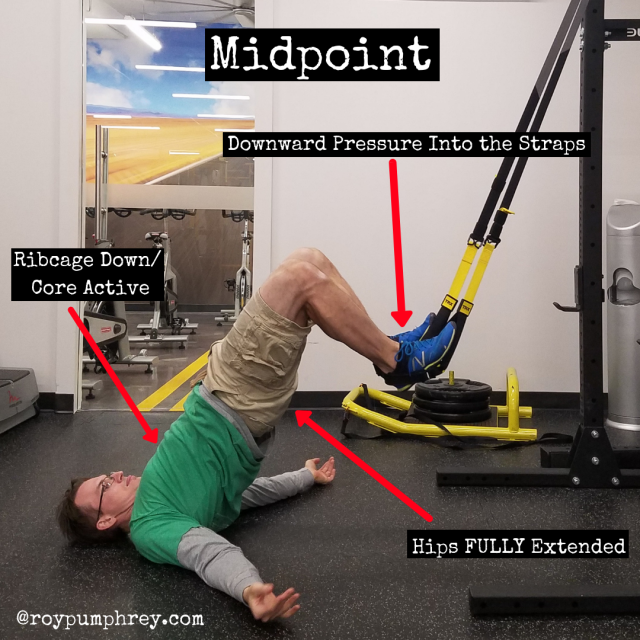
Checklist:
- Straps neither too high, nor too low. Play around and find your “godilocks zone”.
- Tight plank line shoulders through the heel at the start. (ribcage down, glutes on, ankles tight).
- Have downward pressure into the straps, about a 7-8 out of 10.
- AS you pull the heels in PRESS the hips up. This means SIMULTANEOUSLY drive the hips up (using the glutes) while pulling the heels back.
- Maintain the plank line as you return to the start position. <—-NEVER LOSE TENSION HERE.
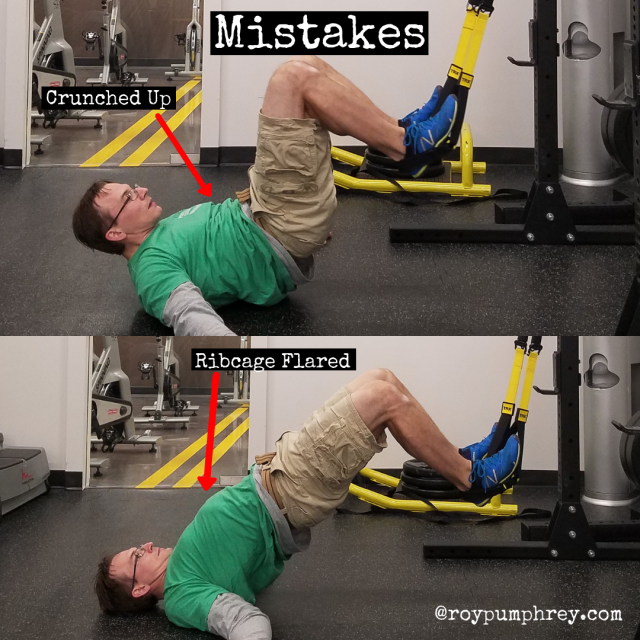
Bro Tips:
- Don’t roll the pelvis towards the chin (posterior pelvic tilt), ie“crunching”, as you pull the heels in. Maintain the plank (neutral spine) and PRESS the hips (think glute bridge)
- These are almost EXACTLY like Slider Hamstring Curls, actually, they are EXACTLY like Slider Hamstring Curls except your heels are elevated.
- Don’t pull the heels back farther than you can keep tension. If the hammies “unload”, that’s too far. Shorten up your knee flexion some or try to glute bridge harder.
- NO CREASE AT THE HIPS…..EVER. <—-yes, a small crease may form, but it should be more or less consistent through the movement, and slight.
Ohh, but I don’t have a TRX?
Welp, you should.
They’re one of the few legit AWESOME pieces of home equipment.
Read about how cool they are, and you can be if you use one here and again here.


